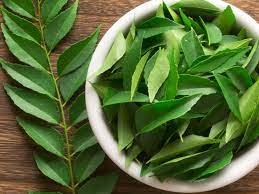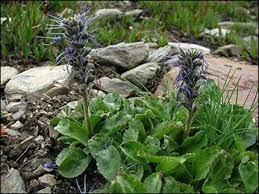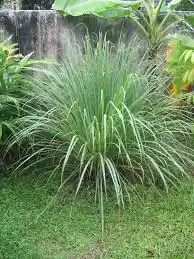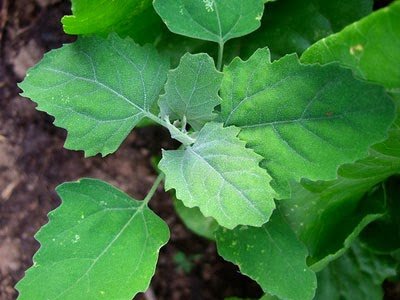Curry Leaves Nutrition Requirements
Nutrition required by Curry Leaves at each stage of its life cycle.
SOIL PREPARATION

Soil Preparation
Soil Preparation Method for Curry Leaves:
1. **Site Selection**: Choose a well-draining location with plenty of sunlight for planting curry leaf plants. Avoid areas prone to waterlogging or where soil pH is extremely high or low.
2. **Soil Testing**: Conduct a soil test to determine the pH and nutrient levels of the soil. Curry leaf plants prefer slightly acidic to neutral soil with a pH range of 6.0 to 7.0.
3. **Soil Preparation**: Prepare the soil by loosening it to a depth of about 12 to 18 inches (30 to 45 cm). Remove any weeds, rocks, or debris from the planting area.
4. **Amendments**: If the soil test indicates deficiencies, amend the soil accordingly. Incorporate organic matter such as compost, well-rotted manure, or leaf mold to improve soil structure and fertility.
5. **Fertilization**: Based on the soil test results and the specific nutrient requirements of curry leaf plants, apply a balanced fertilizer or a fertilizer high in nitrogen, such as a 10-10-10 NPK (nitrogen-phosphorus-potassium) blend, before planting.
6. **Incorporation**: Incorporate the fertilizer and organic amendments evenly into the soil, mixing them thoroughly to ensure uniform distribution of nutrients.
7. **Mulching**: Apply a layer of organic mulch, such as straw, shredded leaves, or grass clippings, around the base of the plants to conserve moisture, suppress weeds, and gradually release nutrients into the soil.
Nutrition Requirements for Curry Leaves at Soil Preparation Stage:
Curry leaf plants have specific nutritional requirements for healthy growth and development. Here are some essential nutrients and their roles:
1. **Nitrogen (N)**: Nitrogen is crucial for promoting vegetative growth and enhancing leaf production in curry leaf plants. Adequate nitrogen levels in the soil promote lush foliage and vigorous growth.
2. **Phosphorus (P)**: Phosphorus is essential for root development, flowering, and fruiting in curry leaf plants. It aids in energy transfer and nutrient uptake, contributing to overall plant health.
3. **Potassium (K)**: Potassium is important for strengthening cell walls, improving disease resistance, and regulating water uptake and nutrient transport within the plant. It plays a vital role in enhancing the flavor and aroma of curry leaves.
4. **Micronutrients**: Curry leaf plants also require essential micronutrients such as iron, manganese, zinc, copper, and boron for various physiological processes, enzyme activation, and overall plant health.
Ensure that the soil preparation stage addresses the nutritional needs of curry leaf plants by providing adequate levels of essential nutrients through fertilization and organic amendments. Regular soil testing and monitoring can help maintain optimal nutrient levels for healthy growth and abundant harvests of curry leaves.
Early Growth (Germination to Establishment)

Early Growth
During the early growth stage of curry leaf plants (germination to establishment), it's crucial to provide the right balance of nutrients to support healthy root development, vigorous vegetative growth, and establishment of the plant. Here are the key nutrients and their roles during this stage:
1. **Nitrogen (N)**: Nitrogen is essential for promoting early vegetative growth, including the development of leaves and stems. It plays a crucial role in chlorophyll production, photosynthesis, and overall plant vigor during the early stages.
2. **Phosphorus (P)**: Phosphorus is necessary for strong root development and overall plant establishment. It aids in energy transfer, promotes early root growth, and enhances the plant's ability to uptake water and nutrients from the soil.
3. **Potassium (K)**: Potassium contributes to the overall health and vigor of curry leaf plants during the early growth stage. It helps regulate water uptake, improves drought tolerance, and enhances disease resistance, promoting robust growth and development.
4. **Micronutrients**: Essential micronutrients such as iron, manganese, zinc, copper, and boron are also important during the early growth stage. These micronutrients play vital roles in enzyme activation, photosynthesis, and various metabolic processes essential for plant growth and development.
To ensure optimal nutrition during the early growth stage of curry leaf plants:
1. **Fertilization**: Apply a balanced fertilizer with a higher ratio of nitrogen (N) to phosphorus (P) and potassium (K) during the early growth stage to promote vigorous vegetative growth and root development.
2. **Organic Matter**: Incorporate well-rotted compost or organic matter into the soil before planting to improve soil structure, fertility, and nutrient availability for young curry leaf plants.
3. **Mulching**: Apply a layer of organic mulch around the base of young curry leaf plants to conserve moisture, suppress weeds, and gradually release nutrients into the soil as the mulch decomposes.
4. **Soil pH**: Ensure that the soil pH is within the optimal range (slightly acidic to neutral, pH 6.0-7.0) to promote nutrient availability and healthy plant growth during the early stages.
By providing adequate nutrition and creating favorable growing conditions, you can promote healthy early growth and establishment of curry leaf plants, setting the stage for robust growth and abundant foliage in subsequent stages of growth. Regular monitoring of plant health and adjusting nutrient management practices as needed can help ensure successful establishment and development of curry leaf plants.
Tillering Stage (Shoot Development)

Tillering Stage
During the tillering stage (shoot development) of curry leaf plants, it's essential to provide the right nutrients to support healthy shoot growth, leaf development, and overall plant vigor. Here are the key nutrients and their roles during this stage:
1. **Nitrogen (N)**: Nitrogen is crucial for promoting vigorous shoot growth and leaf development during the tillering stage. It is a major component of chlorophyll, essential for photosynthesis, and plays a key role in protein synthesis, enzyme activity, and overall plant metabolism.
2. **Phosphorus (P)**: Phosphorus is important for root development, energy transfer, and early establishment of curry leaf plants. It supports the formation of strong, healthy shoots and enhances the plant's ability to uptake water and nutrients from the soil.
3. **Potassium (K)**: Potassium contributes to the overall health and resilience of curry leaf plants during the tillering stage. It helps regulate water uptake, improve disease resistance, and enhance the plant's tolerance to environmental stresses such as drought and pests.
4. **Micronutrients**: Essential micronutrients such as iron, manganese, zinc, copper, and boron are also important during the tillering stage. These micronutrients play vital roles in enzyme activation, photosynthesis, and various metabolic processes essential for shoot development and overall plant growth.
To ensure optimal nutrition during the tillering stage of curry leaf plants:
1. **Fertilization**: Apply a balanced fertilizer with a higher ratio of nitrogen (N) to phosphorus (P) and potassium (K) during the tillering stage to promote vigorous shoot growth and leaf development. Consider using a fertilizer blend with a ratio of 10-5-10 or similar.
2. **Organic Matter**: Incorporate well-rotted compost or organic matter into the soil around the base of curry leaf plants to improve soil fertility, structure, and nutrient availability for healthy shoot development.
3. **Mulching**: Apply a layer of organic mulch around the base of curry leaf plants to conserve soil moisture, suppress weeds, and gradually release nutrients into the soil as the mulch decomposes.
4. **Soil pH**: Ensure that the soil pH is within the optimal range (slightly acidic to neutral, pH 6.0-7.0) to promote nutrient availability and uptake by curry leaf plants during the tillering stage.
By providing adequate nutrition and creating favorable growing conditions, you can promote healthy shoot development and vigorous growth of curry leaf plants during the tillering stage, setting the stage for abundant foliage and optimal plant performance in subsequent stages of growth. Regular monitoring of plant health and adjusting nutrient management practices as needed can help ensure successful cultivation of curry leaf plants.
Flowering

Flowering
During the flowering stage of curry leaf plants, it's important to provide the right nutrients to support flower development, pollination, and subsequent fruit set. Here are the key nutrients and their roles during this stage:
1. **Phosphorus (P)**: Phosphorus plays a crucial role in flower development and reproductive processes. It supports the formation of flowers, enhances pollination, and contributes to the development of healthy seeds and fruits.
2. **Potassium (K)**: Potassium is essential for flower quality and fruit development in curry leaf plants. It helps regulate water uptake, improve nutrient transport, and enhance the plant's resistance to environmental stresses, ensuring optimal flower and fruit production.
3. **Calcium (Ca)**: Calcium is important for flower and fruit development, as well as cell wall formation and integrity. Adequate calcium levels help prevent disorders such as blossom end rot in fruits and ensure proper seed formation.
4. **Magnesium (Mg)**: Magnesium is a component of chlorophyll and plays a vital role in photosynthesis, carbohydrate metabolism, and energy transfer. It supports flower development and overall plant health during the flowering stage.
5. **Boron (B)**: Boron is essential for pollen germination, flower formation, and fruit development. It regulates various physiological processes related to flowering, pollination, and seed production, ensuring successful reproduction in curry leaf plants.
To ensure optimal nutrition during the flowering stage of curry leaf plants:
1. **Fertilization**: Apply a balanced fertilizer with a higher ratio of phosphorus (P) and potassium (K) during the flowering stage to support flower development, pollination, and fruit set. Consider using a fertilizer blend with a ratio of 5-10-10 or similar.
2. **Supplementary Nutrients**: If soil tests indicate deficiencies, consider supplementing with additional nutrients such as calcium, magnesium, and boron to ensure optimal flower and fruit development.
3. **Organic Matter**: Continue to incorporate well-rotted compost or organic matter into the soil to maintain soil fertility, improve nutrient availability, and support healthy flower and fruit production.
4. **Mulching**: Maintain a layer of organic mulch around the base of curry leaf plants to conserve soil moisture, suppress weeds, and provide a steady supply of nutrients to support flower and fruit development.
5. **Soil pH**: Monitor soil pH levels and ensure they remain within the optimal range (slightly acidic to neutral, pH 6.0-7.0) to promote nutrient availability and uptake by curry leaf plants during the flowering stage.
By providing adequate nutrition and creating favorable growing conditions, you can promote healthy flower development, successful pollination, and abundant fruit production in curry leaf plants during the flowering stage. Regular monitoring of plant health and adjusting nutrient management practices as needed can help ensure optimal yields and quality of curry leaves.
Matchuration & Ripening

Matchuration & Ripening
During the maturation and ripening stage of curry leaf plants, it's essential to provide the right nutrients to support the development and maturation of fruits (if applicable) and ensure the production of high-quality leaves. Here are the key nutrients and their roles during this stage:
1. **Potassium (K)**: Potassium plays a crucial role in fruit development, ripening, and quality. It enhances fruit flavor, color, and texture, while also contributing to overall plant health and stress tolerance.
2. **Calcium (Ca)**: Calcium is important for maintaining cell wall integrity and preventing disorders such as blossom end rot in fruits. It also supports leaf health and ensures proper nutrient uptake and distribution throughout the plant.
3. **Magnesium (Mg)**: Magnesium is a component of chlorophyll and essential for photosynthesis, carbohydrate metabolism, and energy transfer. It supports leaf development and overall plant health during the maturation and ripening stage.
4. **Phosphorus (P)**: Phosphorus contributes to fruit development, maturation, and seed formation. It also plays a role in energy transfer, root development, and overall plant metabolism.
5. **Nitrogen (N)**: While nitrogen requirements may decrease during the maturation and ripening stage, it still plays a role in maintaining leaf health and ensuring adequate nutrient transport within the plant.
To ensure optimal nutrition during the maturation and ripening stage of curry leaf plants:
1. **Fertilization**: Apply a balanced fertilizer with a higher ratio of potassium (K) to support fruit maturation, ripening, and leaf quality. Consider using a fertilizer blend with a ratio of 5-10-15 or similar.
2. **Supplementary Nutrients**: If soil tests indicate deficiencies, consider supplementing with additional nutrients such as calcium and magnesium to support fruit development, leaf health, and overall plant vigor.
3. **Organic Matter**: Continue to incorporate well-rotted compost or organic matter into the soil to maintain soil fertility, improve nutrient availability, and support healthy leaf production during the maturation and ripening stage.
4. **Mulching**: Maintain a layer of organic mulch around the base of curry leaf plants to conserve soil moisture, suppress weeds, and provide a steady supply of nutrients to support fruit maturation, ripening, and leaf development.
5. **Soil pH**: Monitor soil pH levels and ensure they remain within the optimal range (slightly acidic to neutral, pH 6.0-7.0) to promote nutrient availability and uptake by curry leaf plants during the maturation and ripening stage.
By providing adequate nutrition and creating favorable growing conditions, you can promote healthy leaf production, fruit maturation, and overall plant health during the maturation and ripening stage of curry leaf plants. Regular monitoring of plant health and adjusting nutrient management practices as needed can help ensure optimal yields and quality of curry leaves.
Harvesting

Harvesting
During the harvesting stage of curry leaf plants, the focus shifts from nutrient application to maintaining plant health and preserving the quality of harvested leaves. Here are the key considerations:
1. **Nutrition Requirement**: At the harvesting stage, the emphasis is on maintaining overall plant health rather than actively supplying nutrients. However, ensuring that the plants have received sufficient nutrients throughout their growth stages can contribute to the quality of the harvested leaves.
2. **Plant Health Maintenance**: Monitor the health of curry leaf plants for any signs of nutrient deficiencies, pests, diseases, or environmental stress. Address any issues promptly to prevent them from affecting the quality of the harvested leaves.
3. **Harvesting Procedure**:
- Select mature, healthy leaves for harvesting. These are usually dark green and fully developed.
- Use clean, sharp pruning shears or scissors to cut the leaves from the plant. Avoid tearing or damaging the leaves during harvesting.
- Harvest leaves selectively, leaving enough foliage on the plant to support continued growth and photosynthesis.
- Remove any yellowed, damaged, or diseased leaves during harvesting to maintain plant hygiene and prevent the spread of pathogens.
- Harvest early in the morning when the leaves are fresh and full of flavor. Avoid harvesting during hot, sunny periods, as this can cause wilting and reduce leaf quality.
- Handle harvested leaves carefully to avoid bruising or crushing, which can lead to discoloration and loss of quality.
4. **Post-Harvest Handling**:
- Sort the harvested leaves based on size, color, and quality. Discard any damaged or inferior leaves.
- Wash the leaves gently under running water to remove any dirt, debris, or pests.
- Allow the washed leaves to air dry briefly before storing or packaging to prevent excess moisture buildup, which can lead to spoilage.
- Store the harvested leaves in clean, breathable containers or bags in a cool, dry place away from direct sunlight. Avoid overcrowding to prevent crushing and bruising of leaves.
5. **Storage and Shelf Life**: Proper storage is crucial for maintaining the quality and shelf life of harvested curry leaves. Stored correctly, they can retain their flavor and aroma for several days. However, fresh curry leaves are best used promptly for optimal flavor and nutrition.
By following these guidelines for harvesting and post-harvest handling, you can ensure that the harvested curry leaves maintain their quality and nutritional value, providing flavorful additions to your culinary creations. Regular monitoring of plant health and adjustments to harvesting practices as needed can help sustain healthy curry leaf plants and optimize yield over time.
Curry Leaves Farming Economics
Get details of Profitability and cost estimate in growing Curry Leaves per acres of Land.
SOIL PREPARATION

Soil Preparation
Soil preparation is crucial for successful bottle gourd cultivation, as it lays the foundation for healthy plant growth and high yields. Here's a guide on the soil preparation method and nutrition requirements at the soil preparation stage for bottle gourd:
### Soil Preparation Method:
1. **Site Selection**:
- Choose a well-drained site with plenty of sunlight for planting bottle gourd. Avoid areas prone to waterlogging or flooding.
2. **Soil Testing**:
- Conduct a soil test to determine the pH and nutrient levels of the soil. Bottle gourd thrives in slightly acidic to neutral soil with a pH range of 6.0 to 7.0.
3. **Clearing and Tilling**:
- Clear the planting area of weeds, rocks, and debris. Use a tiller or hoe to break up the soil and create a fine, crumbly seedbed.
4. **Amendments**:
- Based on the soil test results, amend the soil with organic matter such as compost, well-rotted manure, or leaf mold to improve soil structure, fertility, and moisture retention.
5. **Fertilization**:
- Incorporate balanced fertilizers or organic fertilizers into the soil according to the recommended rates for bottle gourd cultivation. A general guideline is to apply 1 to 2 pounds of nitrogen, phosphorus, and potassium (NPK) fertilizer per 100 square feet of planting area.
6. **Bed Preparation**:
- Create raised beds or mounds to improve drainage and prevent waterlogging. Ensure that the beds are well-compacted and leveled for uniform planting and irrigation.
7. **Mulching**:
- Apply a layer of organic mulch such as straw, hay, or shredded leaves to the soil surface to suppress weed growth, conserve soil moisture, and regulate soil temperature.
8. **Final Bed Preparation**:
- Rake the soil surface to create a smooth, level planting bed. Make shallow furrows or planting holes spaced according to the recommended planting distance for bottle gourd.
### Nutrition Requirements:
During the soil preparation stage, bottle gourd has specific nutrition requirements to support healthy plant growth and development. Here are the key nutrients needed:
1. **Nitrogen (N)**:
- Nitrogen is essential for promoting vigorous vegetative growth and overall plant health. Incorporate nitrogen-rich fertilizers or organic amendments into the soil to provide a steady supply of nitrogen for bottle gourd plants.
2. **Phosphorus (P)**:
- Phosphorus is important for root development, flowering, and fruit set in bottle gourd plants. Apply phosphorus-rich fertilizers or bone meal to the soil to support strong root growth and overall plant vigor.
3. **Potassium (K)**:
- Potassium plays a crucial role in plant metabolism, water regulation, and fruit development. Ensure adequate potassium levels in the soil by applying potassium-rich fertilizers such as potassium sulfate or potassium chloride.
4. **Calcium (Ca)**:
- Calcium contributes to cell wall formation, fruit quality, and disease resistance in bottle gourd plants. Incorporate calcium sources such as gypsum or lime into the soil to prevent calcium-related disorders and support healthy plant growth.
5. **Magnesium (Mg)**:
- Magnesium is a component of chlorophyll and essential for photosynthesis and enzyme activation in bottle gourd plants. Ensure sufficient magnesium levels in the soil by applying magnesium sulfate (Epsom salt) or other magnesium-containing fertilizers.
6. **Micronutrients**:
- Micronutrients such as iron, manganese, zinc, copper, boron, and molybdenum are required in small amounts but are crucial for various physiological processes in bottle gourd plants. Monitor soil micronutrient levels and apply micronutrient fertilizers or foliar sprays as needed to prevent deficiencies.
By following these soil preparation methods and addressing the specific nutrition requirements of bottle gourd plants, you can create an optimal growing environment for healthy plant growth and high yields. Regular soil testing and monitoring of plant health will help ensure that nutrient requirements are met throughout the growing season.
Early Growth (Germination to Establishment)

Early Growth
During the early growth stage, from germination to establishment, bottle gourd plants have specific nutritional requirements to support vigorous vegetative growth and root development. Here are the key nutrients needed during this stage:
1. **Nitrogen (N)**:
- Nitrogen is essential for promoting early vegetative growth, including leaf and stem development. It is a crucial component of chlorophyll, the green pigment responsible for photosynthesis.
- Apply nitrogen-rich fertilizers or organic amendments to provide a steady supply of nitrogen to support healthy plant growth during the early stages.
2. **Phosphorus (P)**:
- Phosphorus plays a vital role in root development, energy transfer, and overall plant metabolism. Adequate phosphorus levels are crucial for establishing a strong root system, which enables the plant to absorb water and nutrients efficiently.
- Incorporate phosphorus-rich fertilizers or bone meal into the soil to support root growth and early plant establishment.
3. **Potassium (K)**:
- Potassium is important for promoting overall plant vigor, water regulation, and disease resistance. It helps plants withstand environmental stress and promotes balanced growth.
- Apply potassium-rich fertilizers such as potassium sulfate or potassium chloride to ensure an adequate supply of potassium for early growth and establishment.
4. **Calcium (Ca)**:
- Calcium is essential for cell wall formation, structural integrity, and disease resistance in bottle gourd plants. Adequate calcium levels are crucial for preventing disorders such as blossom end rot.
- Incorporate calcium sources such as gypsum or lime into the soil to provide sufficient calcium for early plant growth and development.
5. **Magnesium (Mg)**:
- Magnesium is a component of chlorophyll and essential for photosynthesis, enzyme activation, and overall plant metabolism. It plays a vital role in energy transfer and nutrient uptake.
- Ensure sufficient magnesium levels in the soil by applying magnesium sulfate (Epsom salt) or other magnesium-containing fertilizers to support early growth and establishment.
6. **Micronutrients**:
- Micronutrients such as iron, manganese, zinc, copper, boron, and molybdenum are required in small amounts but are crucial for various physiological processes during early plant growth.
- Monitor soil micronutrient levels and provide micronutrient fertilizers or foliar sprays as needed to prevent deficiencies and promote healthy plant growth.
By providing the appropriate balance of these nutrients during the early growth stage, you can support vigorous vegetative growth, strong root development, and overall plant health in bottle gourd plants. Regular soil testing and monitoring of plant health will help ensure that nutrient requirements are met throughout the growing season.
Tillering Stage (Shoot Development)

Tillering Stage
Soil preparation is a crucial step in wheat cultivation, as it directly affects the crop's growth and yield. Here are the soil preparation methods and nutrition requirements at the soil preparation stage for wheat:
Soil Preparation Method:
Land Preparation: Plow the field to break the soil and turn it over. Use a disc harrow or cultivator to further break down clods and level the soil. Ensure proper seedbed preparation by creating a fine, well-tilled soil surface.
Seedbed Preparation: Level the field to provide a uniform surface for planting. Use a roller or a harrow to firm up the soil to facilitate seed-to-soil contact. Remove any weeds or crop residues from the previous season to reduce competition with the wheat crop.
Seed Rate and Sowing: Determine the appropriate seed rate based on the variety and local recommendations. Use a suitable seed drill for uniform and precise sowing. Ensure proper seed depth according to recommended guidelines.
Fertilization: Apply a balanced fertilizer based on soil nutrient analysis and regional recommendations. Incorporate fertilizers into the soil during seedbed preparation. Consider applying phosphorus and potassium along with nitrogen for optimal wheat growth.
Organic Matter: Incorporate well-rotted organic matter, such as compost or manure, into the soil. Organic matter enhances soil structure, water retention, and nutrient availability.
pH Adjustment: Check and adjust soil pH to the recommended range for wheat cultivation (typically around 6.0 to 7.5). Lime may be added to raise pH, and sulfur may be added to lower pH as needed.
Nutrition Requirement at Soil Preparation Stage: Nitrogen (N): Nitrogen is essential for vegetative growth and is crucial during the early stages of wheat development. Apply nitrogen fertilizer during soil preparation to provide an initial boost to the crop.
Phosphorus (P): Phosphorus is vital for root development and early plant establishment. Apply phosphorus-containing fertilizers, such as diammonium phosphate (DAP), during soil preparation.
Potassium (K): Potassium supports overall plant health, disease resistance, and drought tolerance. Apply potassium-containing fertilizers, such as potassium chloride (Muriate of Potash), during soil preparation.
Micronutrients: Consider incorporating micronutrients like zinc, copper, and boron based on soil testing results. Micronutrients play essential roles in enzyme activities and overall plant health.
Organic Matter: Organic matter contributes to nutrient availability and improves the soil's water-holding capacity. Ensure a good supply of organic matter through the incorporation of well-decomposed compost or manure.
Soil pH: Adjust soil pH to the recommended range for wheat cultivation to optimize nutrient uptake by the plants.
Microbial Activity: Encourage beneficial microbial activity in the soil by incorporating organic matter. Healthy soil microbial communities contribute to nutrient cycling and availability.
Water Management: Ensure proper drainage to prevent waterlogging, which can negatively impact nutrient uptake. Irrigate if necessary to maintain adequate soil moisture during wheat establishment.
Flowering

Flowering
Soil preparation is a crucial step in wheat cultivation, as it directly affects the crop's growth and yield. Here are the soil preparation methods and nutrition requirements at the soil preparation stage for wheat:
Soil Preparation Method:
Land Preparation: Plow the field to break the soil and turn it over. Use a disc harrow or cultivator to further break down clods and level the soil. Ensure proper seedbed preparation by creating a fine, well-tilled soil surface.
Seedbed Preparation: Level the field to provide a uniform surface for planting. Use a roller or a harrow to firm up the soil to facilitate seed-to-soil contact. Remove any weeds or crop residues from the previous season to reduce competition with the wheat crop.
Seed Rate and Sowing: Determine the appropriate seed rate based on the variety and local recommendations. Use a suitable seed drill for uniform and precise sowing. Ensure proper seed depth according to recommended guidelines.
Fertilization: Apply a balanced fertilizer based on soil nutrient analysis and regional recommendations. Incorporate fertilizers into the soil during seedbed preparation. Consider applying phosphorus and potassium along with nitrogen for optimal wheat growth.
Organic Matter: Incorporate well-rotted organic matter, such as compost or manure, into the soil. Organic matter enhances soil structure, water retention, and nutrient availability.
pH Adjustment: Check and adjust soil pH to the recommended range for wheat cultivation (typically around 6.0 to 7.5). Lime may be added to raise pH, and sulfur may be added to lower pH as needed.
Nutrition Requirement at Soil Preparation Stage: Nitrogen (N): Nitrogen is essential for vegetative growth and is crucial during the early stages of wheat development. Apply nitrogen fertilizer during soil preparation to provide an initial boost to the crop.
Phosphorus (P): Phosphorus is vital for root development and early plant establishment. Apply phosphorus-containing fertilizers, such as diammonium phosphate (DAP), during soil preparation.
Potassium (K): Potassium supports overall plant health, disease resistance, and drought tolerance. Apply potassium-containing fertilizers, such as potassium chloride (Muriate of Potash), during soil preparation.
Micronutrients: Consider incorporating micronutrients like zinc, copper, and boron based on soil testing results. Micronutrients play essential roles in enzyme activities and overall plant health.
Organic Matter: Organic matter contributes to nutrient availability and improves the soil's water-holding capacity. Ensure a good supply of organic matter through the incorporation of well-decomposed compost or manure.
Soil pH: Adjust soil pH to the recommended range for wheat cultivation to optimize nutrient uptake by the plants.
Microbial Activity: Encourage beneficial microbial activity in the soil by incorporating organic matter. Healthy soil microbial communities contribute to nutrient cycling and availability.
Water Management: Ensure proper drainage to prevent waterlogging, which can negatively impact nutrient uptake. Irrigate if necessary to maintain adequate soil moisture during wheat establishment.
Matchuration & Ripening

Matchuration & Ripening
Soil preparation is a crucial step in wheat cultivation, as it directly affects the crop's growth and yield. Here are the soil preparation methods and nutrition requirements at the soil preparation stage for wheat:
Soil Preparation Method:
Land Preparation: Plow the field to break the soil and turn it over. Use a disc harrow or cultivator to further break down clods and level the soil. Ensure proper seedbed preparation by creating a fine, well-tilled soil surface.
Seedbed Preparation: Level the field to provide a uniform surface for planting. Use a roller or a harrow to firm up the soil to facilitate seed-to-soil contact. Remove any weeds or crop residues from the previous season to reduce competition with the wheat crop.
Seed Rate and Sowing: Determine the appropriate seed rate based on the variety and local recommendations. Use a suitable seed drill for uniform and precise sowing. Ensure proper seed depth according to recommended guidelines.
Fertilization: Apply a balanced fertilizer based on soil nutrient analysis and regional recommendations. Incorporate fertilizers into the soil during seedbed preparation. Consider applying phosphorus and potassium along with nitrogen for optimal wheat growth.
Organic Matter: Incorporate well-rotted organic matter, such as compost or manure, into the soil. Organic matter enhances soil structure, water retention, and nutrient availability.
pH Adjustment: Check and adjust soil pH to the recommended range for wheat cultivation (typically around 6.0 to 7.5). Lime may be added to raise pH, and sulfur may be added to lower pH as needed.
Nutrition Requirement at Soil Preparation Stage: Nitrogen (N): Nitrogen is essential for vegetative growth and is crucial during the early stages of wheat development. Apply nitrogen fertilizer during soil preparation to provide an initial boost to the crop.
Phosphorus (P): Phosphorus is vital for root development and early plant establishment. Apply phosphorus-containing fertilizers, such as diammonium phosphate (DAP), during soil preparation.
Potassium (K): Potassium supports overall plant health, disease resistance, and drought tolerance. Apply potassium-containing fertilizers, such as potassium chloride (Muriate of Potash), during soil preparation.
Micronutrients: Consider incorporating micronutrients like zinc, copper, and boron based on soil testing results. Micronutrients play essential roles in enzyme activities and overall plant health.
Organic Matter: Organic matter contributes to nutrient availability and improves the soil's water-holding capacity. Ensure a good supply of organic matter through the incorporation of well-decomposed compost or manure.
Soil pH: Adjust soil pH to the recommended range for wheat cultivation to optimize nutrient uptake by the plants.
Microbial Activity: Encourage beneficial microbial activity in the soil by incorporating organic matter. Healthy soil microbial communities contribute to nutrient cycling and availability.
Water Management: Ensure proper drainage to prevent waterlogging, which can negatively impact nutrient uptake. Irrigate if necessary to maintain adequate soil moisture during wheat establishment.
Harvesting

Harvesting
Soil preparation is a crucial step in wheat cultivation, as it directly affects the crop's growth and yield. Here are the soil preparation methods and nutrition requirements at the soil preparation stage for wheat:
Soil Preparation Method:
Land Preparation: Plow the field to break the soil and turn it over. Use a disc harrow or cultivator to further break down clods and level the soil. Ensure proper seedbed preparation by creating a fine, well-tilled soil surface.
Seedbed Preparation: Level the field to provide a uniform surface for planting. Use a roller or a harrow to firm up the soil to facilitate seed-to-soil contact. Remove any weeds or crop residues from the previous season to reduce competition with the wheat crop.
Seed Rate and Sowing: Determine the appropriate seed rate based on the variety and local recommendations. Use a suitable seed drill for uniform and precise sowing. Ensure proper seed depth according to recommended guidelines.
Fertilization: Apply a balanced fertilizer based on soil nutrient analysis and regional recommendations. Incorporate fertilizers into the soil during seedbed preparation. Consider applying phosphorus and potassium along with nitrogen for optimal wheat growth.
Organic Matter: Incorporate well-rotted organic matter, such as compost or manure, into the soil. Organic matter enhances soil structure, water retention, and nutrient availability.
pH Adjustment: Check and adjust soil pH to the recommended range for wheat cultivation (typically around 6.0 to 7.5). Lime may be added to raise pH, and sulfur may be added to lower pH as needed.
Nutrition Requirement at Soil Preparation Stage: Nitrogen (N): Nitrogen is essential for vegetative growth and is crucial during the early stages of wheat development. Apply nitrogen fertilizer during soil preparation to provide an initial boost to the crop.
Phosphorus (P): Phosphorus is vital for root development and early plant establishment. Apply phosphorus-containing fertilizers, such as diammonium phosphate (DAP), during soil preparation.
Potassium (K): Potassium supports overall plant health, disease resistance, and drought tolerance. Apply potassium-containing fertilizers, such as potassium chloride (Muriate of Potash), during soil preparation.
Micronutrients: Consider incorporating micronutrients like zinc, copper, and boron based on soil testing results. Micronutrients play essential roles in enzyme activities and overall plant health.
Organic Matter: Organic matter contributes to nutrient availability and improves the soil's water-holding capacity. Ensure a good supply of organic matter through the incorporation of well-decomposed compost or manure.
Soil pH: Adjust soil pH to the recommended range for wheat cultivation to optimize nutrient uptake by the plants.
Microbial Activity: Encourage beneficial microbial activity in the soil by incorporating organic matter. Healthy soil microbial communities contribute to nutrient cycling and availability.
Water Management: Ensure proper drainage to prevent waterlogging, which can negatively impact nutrient uptake. Irrigate if necessary to maintain adequate soil moisture during wheat establishment.
Curry Leaves Disease Details
Nutrition required by Curry Leaves at each stage of its life cycle.
SOIL PREPARATION

Soil Preparation
During the soil preparation stage for curry leaf cultivation, several diseases and pests can pose threats to the crop. Some common ones include:
1. **Soil-borne pathogens**: Various fungal, bacterial, and nematode pathogens present in the soil can infect curry leaf plants at the soil preparation stage. These pathogens can cause diseases such as root rot, damping-off, and wilt.
2. **Weeds**: Weed infestation can compete with curry leaf plants for nutrients, water, and sunlight. Certain weed species may also harbor pests and diseases that can affect curry leaf plants.
Precautions to prevent diseases and pests during the soil preparation stage for curry leaf cultivation:
1. **Soil sterilization**: If feasible, consider soil sterilization methods such as solarization or steam treatment to reduce soil-borne pathogens and weed seeds in the soil.
2. **Crop rotation**: Avoid planting curry leaf plants in the same location where other susceptible crops were grown previously. Crop rotation can help break the disease cycle and reduce the buildup of soil-borne pathogens.
3. **Weed management**: Remove existing weeds from the planting area before soil preparation. Use manual or mechanical methods to control weeds and prevent them from competing with curry leaf plants.
4. **Soil amendment**: Incorporate organic matter such as compost or well-rotted manure into the soil during preparation. Organic matter improves soil structure, fertility, and microbial activity, which can help suppress soil-borne diseases and promote plant health.
5. **Preventive treatments**: Consider applying biocontrol agents, beneficial microbes, or soil amendments with disease-suppressing properties to the soil during preparation. These treatments can help enhance soil health and reduce the incidence of soil-borne diseases.
6. **Hygiene practices**: Practice good sanitation and hygiene during soil preparation to prevent the introduction and spread of pests and diseases. Clean and disinfect tools, equipment, and containers to minimize contamination.
7. **Monitoring**: Regularly monitor the planting area for signs of soil-borne diseases, such as wilting, stunted growth, or yellowing of plants. Early detection allows for timely intervention and management of diseases.
By implementing these precautions, you can help prevent the occurrence of diseases and pests during the soil preparation stage for curry leaf cultivation, setting the foundation for healthy plant growth and successful crop production.
Early Growth (Germination to Establishment)

Early Growing
During the early growth stage of curry leaf plants (germination to establishment), several diseases and pests can pose threats to the crop. Some common ones include:
1. **Damping-off**: Damping-off is a fungal disease that affects seedlings, causing them to collapse and die at the soil line. It can be caused by various soil-borne pathogens such as Pythium and Rhizoctonia.
2. **Root rot**: Root rot diseases, caused by fungal pathogens such as Fusarium and Phytophthora, can infect young curry leaf plants, leading to rotting of the roots and reduced plant vigor.
3. **Leaf spot diseases**: Various fungal pathogens can cause leaf spot diseases, leading to the development of lesions on curry leaf leaves and affecting plant growth and vigor.
4. **Aphids**: Aphids are sucking insects that can infest young curry leaf plants, feeding on sap and causing distortion of leaves, stunted growth, and transmission of viral diseases.
Precautions to prevent diseases and pests during the early growth stage of curry leaf plants:
1. **Seed treatment**: Treat curry leaf seeds with fungicides or biocontrol agents before sowing to protect against damping-off and seedling diseases.
2. **Use of disease-free planting material**: Use healthy and disease-free seedlings or cuttings for planting to reduce the risk of introducing pathogens to the planting area.
3. **Good drainage**: Ensure proper soil drainage to prevent waterlogging, which can promote the development of root rot diseases.
4. **Avoid overwatering**: Avoid overwatering young curry leaf plants, as excess moisture can create favorable conditions for damping-off and root rot diseases.
5. **Sanitation**: Keep the planting area clean and free of weeds, debris, and plant residues, which can harbor pests and diseases.
6. **Crop rotation**: Avoid planting curry leaf plants in the same location where other susceptible crops were grown previously to reduce the risk of soil-borne diseases.
7. **Monitoring**: Regularly monitor young curry leaf plants for signs of pests and diseases, such as wilting, yellowing of leaves, or presence of pests. Early detection allows for timely intervention and management.
By implementing these precautions, you can help prevent the occurrence of diseases and pests during the early growth stage of curry leaf plants, promoting healthy establishment and vigorous growth of the crop.
Tillering Stage (Shoot Development)

Tillering Stage
During the tillering stage (shoot development) of curry leaf plants, several diseases and pests can pose threats to the crop. Some common ones include:
1. **Leaf spot diseases**: Various fungal pathogens can cause leaf spot diseases, leading to the development of lesions on curry leaf leaves and affecting plant growth and vigor.
2. **Powdery mildew**: Powdery mildew is a fungal disease that can affect curry leaf plants, causing a powdery white coating on leaves and affecting plant health.
3. **Root rot**: Root rot diseases, caused by fungal pathogens such as Fusarium and Phytophthora, can infect curry leaf plants during the tillering stage, leading to rotting of the roots and reduced plant vigor.
4. **Aphids**: Aphids are sucking insects that can infest curry leaf plants during the tillering stage, feeding on sap and causing distortion of leaves, stunted growth, and transmission of viral diseases.
Precautions to prevent diseases and pests during the tillering stage of curry leaf plants:
1. **Sanitation**: Keep the planting area clean and free of weeds, debris, and plant residues, which can harbor pests and diseases.
2. **Crop rotation**: Avoid planting curry leaf plants in the same location where other susceptible crops were grown previously to reduce the risk of soil-borne diseases.
3. **Good drainage**: Ensure proper soil drainage to prevent waterlogging, which can promote the development of root rot diseases.
4. **Avoid overwatering**: Avoid overwatering curry leaf plants during the tillering stage, as excess moisture can create favorable conditions for the development of fungal diseases such as powdery mildew.
5. **Fungicide application**: Apply fungicides preventively or curatively according to label instructions to control fungal diseases such as powdery mildew and leaf spot diseases.
6. **Pest monitoring**: Regularly monitor curry leaf plants for signs of pest infestation, such as aphids, and intervene with appropriate control measures if pest populations exceed thresholds.
7. **Cultural practices**: Practice good weed management to reduce habitat for pests and diseases and maintain plant vigor.
By implementing these precautions, you can help prevent the occurrence of diseases and pests during the tillering stage of curry leaf plants, promoting healthy shoot development and overall plant vigor.
Flowering

Flowering
During the flowering stage of curry leaf plants, several diseases and pests can pose threats to the crop. Some common ones include:
1. **Powdery mildew**: Powdery mildew is a fungal disease that can affect curry leaf plants, causing a powdery white coating on leaves and affecting plant health.
2. **Leaf spot diseases**: Various fungal pathogens can cause leaf spot diseases, leading to the development of lesions on curry leaf leaves and affecting plant growth and vigor.
3. **Bacterial leaf spot**: Bacterial pathogens can infect curry leaf plants during the flowering stage, causing dark lesions on leaves and affecting overall plant health.
4. **Aphids**: Aphids are sucking insects that can infest curry leaf plants during the flowering stage, feeding on sap and causing distortion of leaves, stunted growth, and transmission of viral diseases.
Precautions to prevent diseases and pests during the flowering stage of curry leaf plants:
1. **Sanitation**: Keep the planting area clean and free of weeds, debris, and plant residues, which can harbor pests and diseases.
2. **Good airflow**: Ensure adequate spacing between curry leaf plants to promote air circulation, which can help reduce the risk of fungal diseases such as powdery mildew and leaf spot diseases.
3. **Water management**: Avoid overhead irrigation during the flowering stage to reduce moisture on leaves, which can promote the development of fungal diseases.
4. **Fungicide and bactericide application**: Apply fungicides and bactericides preventively or curatively according to label instructions to control fungal and bacterial diseases affecting curry leaf plants during the flowering stage.
5. **Pest monitoring**: Regularly monitor curry leaf plants for signs of pest infestation, such as aphids, and intervene with appropriate control measures if pest populations exceed thresholds.
6. **Cultural practices**: Practice good weed management to reduce habitat for pests and diseases and maintain plant vigor.
By implementing these precautions, you can help prevent the occurrence of diseases and pests during the flowering stage of curry leaf plants, promoting healthy flower development and overall plant vigor.
Matchuration & Ripening

Matchuration & Ripening
During the maturation and ripening stage of curry leaf plants, several diseases and pests can pose threats to the crop. Some common ones include:
1. **Anthracnose**: Anthracnose is a fungal disease that affects various parts of curry leaf plants, including leaves, stems, and fruits. It causes dark, sunken lesions on leaves and can lead to premature leaf drop and fruit rot.
2. **Fruit rot**: Various fungal pathogens can cause fruit rot in curry leaf plants, leading to the decay of ripe or overripe fruits and reducing their quality and marketability.
3. **Powdery mildew**: Powdery mildew can continue to affect curry leaf plants during the maturation and ripening stage, causing a powdery white coating on leaves and affecting plant health.
4. **Aphids**: Aphids may continue to infest curry leaf plants during the maturation and ripening stage, feeding on sap and causing distortion of leaves, stunted growth, and transmission of viral diseases.
Precautions to prevent diseases and pests during the maturation and ripening stage of curry leaf plants:
1. **Sanitation**: Keep the planting area clean and free of weeds, debris, and plant residues, which can harbor pests and diseases.
2. **Good airflow**: Ensure adequate spacing between curry leaf plants to promote air circulation, which can help reduce the risk of fungal diseases such as anthracnose and powdery mildew.
3. **Fruit sanitation**: Remove and destroy any infected or diseased fruits promptly to prevent the spread of fungal diseases such as anthracnose and fruit rot.
4. **Fungicide application**: Apply fungicides preventively or curatively according to label instructions to control fungal diseases affecting curry leaf plants during the maturation and ripening stage.
5. **Pest monitoring**: Regularly monitor curry leaf plants for signs of pest infestation, such as aphids, and intervene with appropriate control measures if pest populations exceed thresholds.
6. **Cultural practices**: Practice good weed management to reduce habitat for pests and diseases and maintain plant vigor.
By implementing these precautions, you can help prevent the occurrence of diseases and pests during the maturation and ripening stage of curry leaf plants, promoting healthy fruit development and overall plant vigor.
Harvesting

Harvesting
During the harvesting stage of curry leaves (Kadi Patta), several diseases and pests can affect the plant. Here are some common diseases and pests that can occur, along with precautions to prevent them:
1. **Powdery Mildew**: This fungal disease appears as white powdery spots on leaves, stems, and flowers. It thrives in warm, humid conditions.
- Precautions: Provide good air circulation by spacing plants appropriately. Avoid overhead watering, as this can create ideal conditions for powdery mildew. Use fungicides if necessary, following the instructions carefully.
2. **Leaf Spot**: Leaf spot diseases are caused by various fungi and bacteria, resulting in dark spots on leaves that may eventually cause them to yellow and drop.
- Precautions: Practice crop rotation to prevent the buildup of pathogens in the soil. Remove and destroy infected leaves to prevent the spread of the disease. Avoid overhead watering to minimize moisture on leaves.
3. **Anthracnose**: Anthracnose is a fungal disease that causes dark, sunken lesions on leaves and stems. It thrives in warm, wet conditions.
- Precautions: Avoid overhead watering and excess moisture on leaves. Remove and destroy infected plant material. Apply fungicides if necessary, following label instructions.
4. **Aphids**: Aphids are small, soft-bodied insects that suck sap from plants, causing distorted growth and yellowing of leaves.
- Precautions: Monitor plants regularly for aphid infestations. Use insecticidal soap or neem oil to control aphids. Introduce natural predators like ladybugs to help manage aphid populations.
5. **Whiteflies**: Whiteflies are tiny, white insects that feed on plant sap and can transmit viruses. They often cluster on the undersides of leaves.
- Precautions: Use yellow sticky traps to monitor and catch adult whiteflies. Spray plants with insecticidal soap or neem oil to control whitefly populations. Introduce natural predators like parasitic wasps.
6. **Caterpillars**: Caterpillars, such as the curry leaf caterpillar, can feed on leaves, causing significant damage.
- Precautions: Handpick caterpillars from plants and destroy them. Use biological controls like Bacillus thuringiensis (Bt) if caterpillar populations are high.
7. **Thrips**: Thrips are tiny, slender insects that feed on plant sap, causing stippling and distortion of leaves.
- Precautions: Use reflective mulches to deter thrips. Apply insecticidal soap or neem oil to control thrips infestations. Introduce natural predators like predatory mites.
8. **Harvesting**: Ensure that harvesting is done carefully to avoid causing physical damage to the plant, which can lead to entry points for diseases and pests. Use clean, sharp tools and avoid harvesting during wet conditions to minimize stress on the plant.
Regular monitoring of plants, maintaining proper hygiene, providing optimal growing conditions, and using integrated pest management practices can help prevent and manage diseases and pests in curry leaf plants during the harvesting stage."









